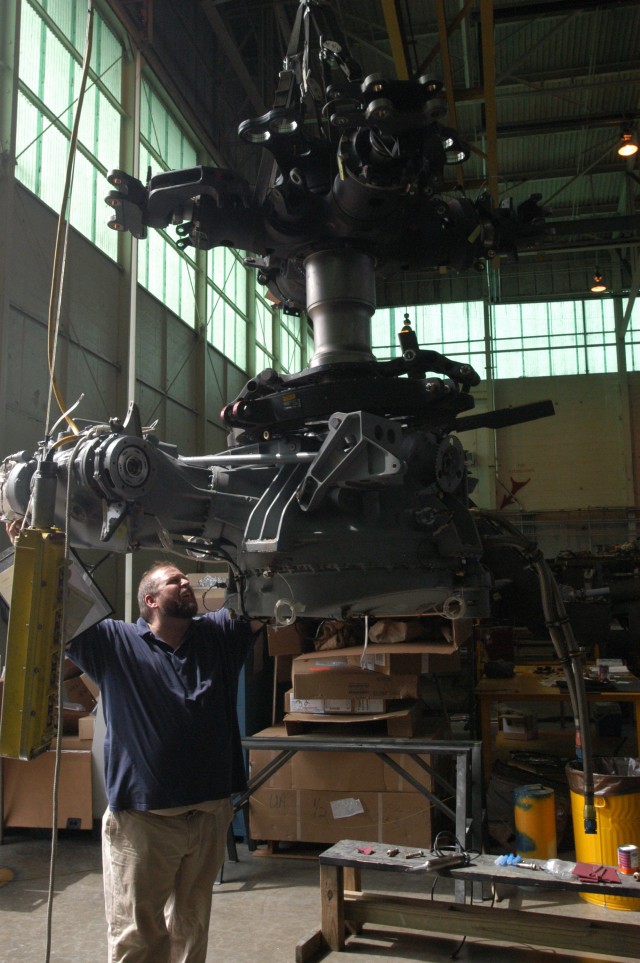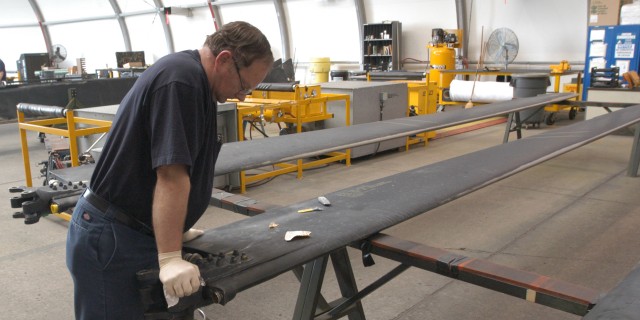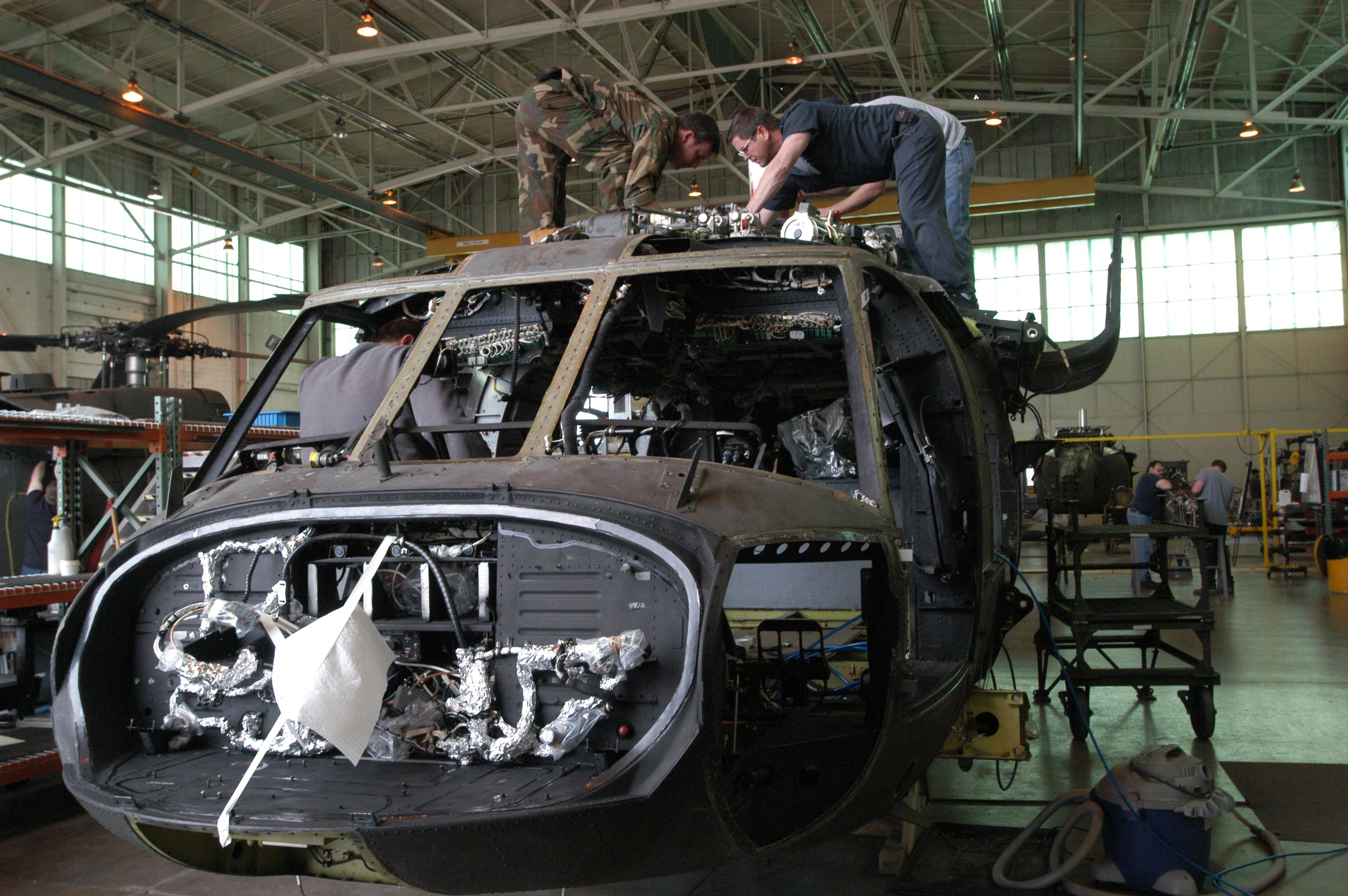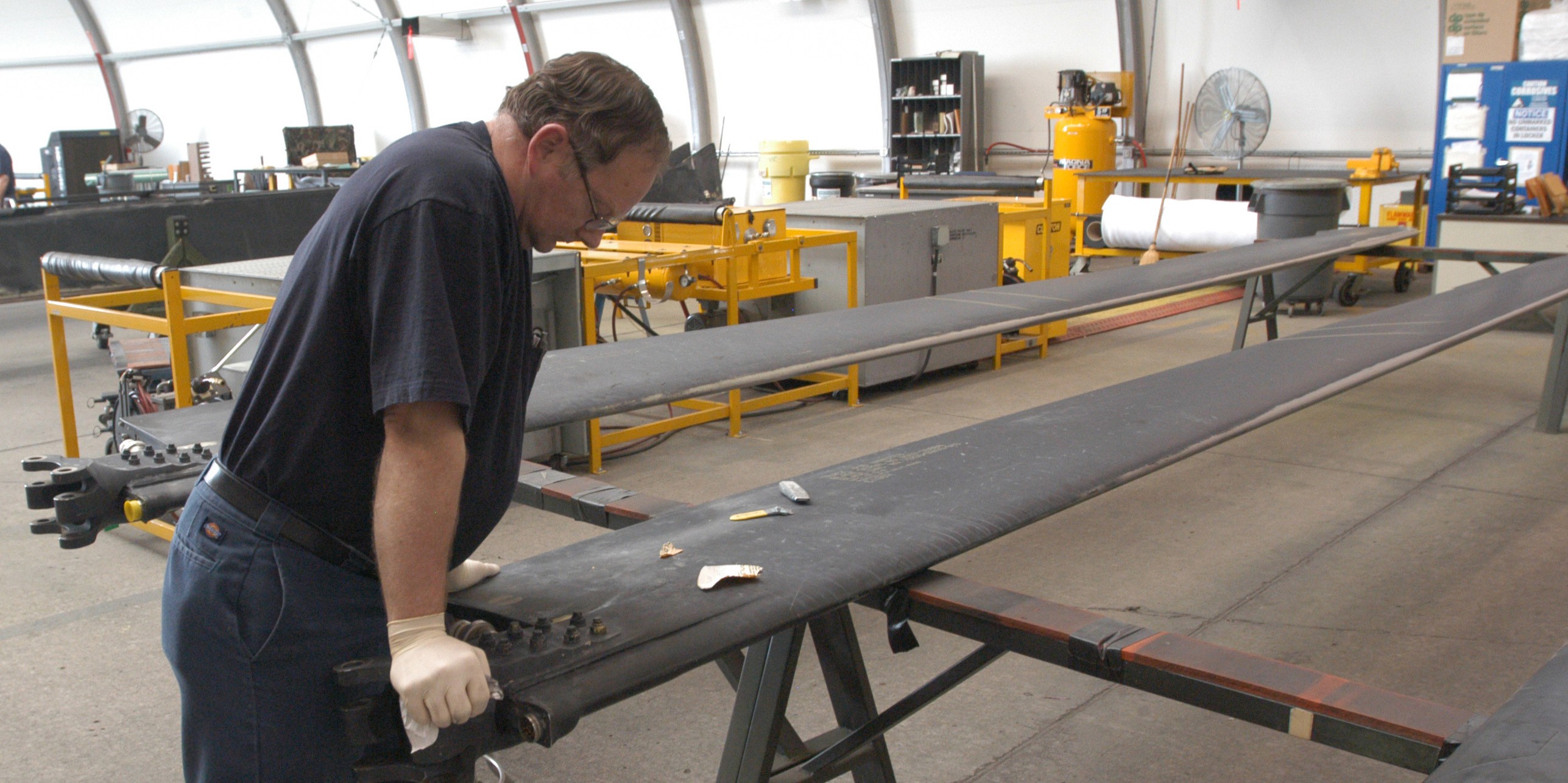FORT CAMPBELL, KY - April 16, 2009 -- The old joke among helicopter mechanics is that you can describe a "bird" as 10,000 parts rotating around an oil leak, waiting for metal fatigue to set in.
Fixing and cleaning those 10,000 parts in a timely fashion is the job of the Aviation Logistics Management Division.
"[Helicopters] are actually very hardy aircraft but they take a lot of punishment," said Fort Campbell ALMD Chief Gary Adams.
This branch of the Directorate of Logistics is charged with resetting Army aircraft that have carried out intense missions under extreme weather and terrain. RESET, which is part of the Army Force Generation cycle, is designed to return Soldiers and equipment to combat readiness like clockwork.
Adams said his shops have reset 431 aircraft since the onset of the Global War on Terror. Back shops near the Campbell Army Airfield are currently retooling 10 UH-60 Black Hawks, six Apaches and two CH-47 Chinooks.
Restoring a helicopter piece-by-piece must be done efficiently. Each aircraft is the sum of literally hundreds of subsystems.
Mechanic Crew Chief Matt Hahnefeld said breaking down an entire Black Hawk in a hangar takes a five-man team about three days. First to come out are major components such as the engine, the rotors and the transmission. Next the smaller parts: seats, doors, windows, etc. Parts that don't come off are covered over with the appropriate barrier material to protect them during the pressure wash.
Because the helicopters come back caked with grime and dust, the entire aircraft needs three days of pressure washing. Every square inch of the aircraft has to be gone over repeatedly.
"They are just so dirty," Hahnefeld said.
The most stubborn filth is the gunk that results from oil mixing with sand, he said.
Meanwhile each little component is sent to back shops stocked with replacement parts and staffed with mechanics specialized in its maintenance. One shop focuses on generators, another on rotor blades another on engines and so forth.
Rotor blades might be the hardest moving part on a helicopter and it shows. Their edges are worn from millions of tiny sparks ignited by collisions with grains of sand, Adams said. Through night vision goggles, the path of blade rotation appears as a green glow.
Even hairline fractures in a blade must be attended to. Helicopter Mechanic Roger Unsell puts his full weight on one end of a Black Hawk blade propped up by sawhorses. Unsell carefully scrutinizes the blade's graphite skin. Each tear must be sealed, he said.
Helicopters with heavy combat damage are sent to mechanics with the most experience.
On average, Adam's crews can completely reset Black Hawks within 75 days and Chinooks within 120 days. The last two weeks are dedicated to system checks and test flights. When all is said and done, contractors spend an average of 4,500 man hours to reset one Black Hawk.
During the past eight years, the division has grown from 78 contract workers to more than 500. The division's annual budget reached $178 million last year.
Adams said the Army has concentrated its maintenance operations at Fort Campbell because of its consistent performance, and density of aircraft and facilities.
Fort Campbell ALMD is now one of nine aviation RESET sites in the world. The special designation brings aircraft from installations all around the country. In addition to Screaming Eagle helicopters, Adams' crews are also working on aircraft from the 1st and 3rd Infantry Division as well as from the Army National Guard.
Standing up RESET sites enables the Army to make better use of the limited numbers of mechanics with the specialized skills for the job, Adams said.
Fort Campbell DOL Director Jim Haley said the mechanics are sometimes loaned out to other installations that don't have the know-how.
He added, that's one indication that the Army considers Fort Campbell ALMD as one of the best aviation RESET operations.






Social Sharing